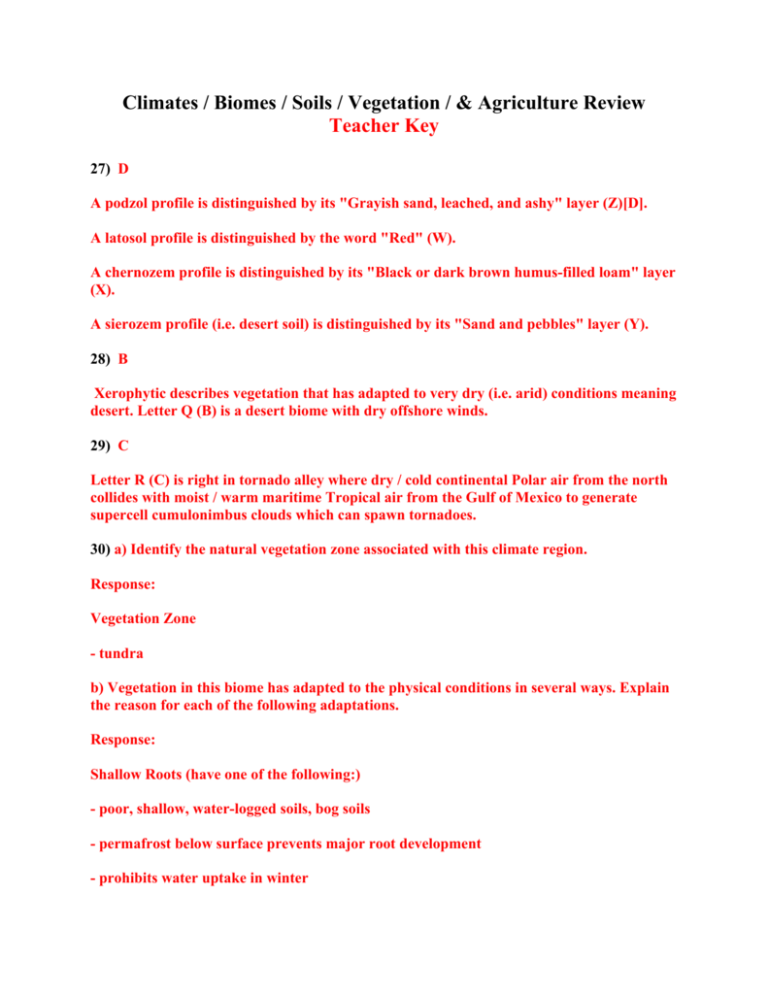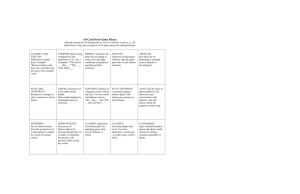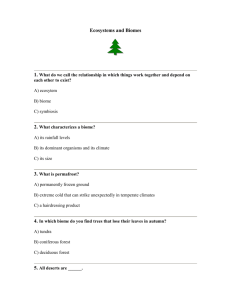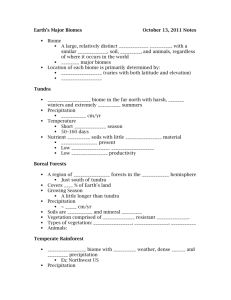Climates / Biomes / Soils / Vegetation / & Agriculture Review
advertisement

Climates / Biomes / Soils / Vegetation / & Agriculture Review Teacher Key 27) D A podzol profile is distinguished by its "Grayish sand, leached, and ashy" layer (Z)[D]. A latosol profile is distinguished by the word "Red" (W). A chernozem profile is distinguished by its "Black or dark brown humus-filled loam" layer (X). A sierozem profile (i.e. desert soil) is distinguished by its "Sand and pebbles" layer (Y). 28) B Xerophytic describes vegetation that has adapted to very dry (i.e. arid) conditions meaning desert. Letter Q (B) is a desert biome with dry offshore winds. 29) C Letter R (C) is right in tornado alley where dry / cold continental Polar air from the north collides with moist / warm maritime Tropical air from the Gulf of Mexico to generate supercell cumulonimbus clouds which can spawn tornadoes. 30) a) Identify the natural vegetation zone associated with this climate region. Response: Vegetation Zone - tundra b) Vegetation in this biome has adapted to the physical conditions in several ways. Explain the reason for each of the following adaptations. Response: Shallow Roots (have one of the following:) - poor, shallow, water-logged soils, bog soils - permafrost below surface prevents major root development - prohibits water uptake in winter Stunted Growth (have one of the following:) - limited precipitation - short growing season - lack of direct heat rays - extreme cold which hampers the growth of shrubs or trees, but which certain grasses, mosses and lichens can tolerate - dormancy during winter 31) B With climate graph Z, it is hot and wet all year. These are the conditions present in an equatorial region (B). 32) C A coniferous forest biome will thrive in a wet and temperate climate. This is shown by climate graph Y (C) which is Vancouver's climate. 33) B The key layer shown is the "Black or dark brown humus-filled loam" layer which is the distinguishing part of a chernozem soil profile. Chernozem soil is found on the prairies / steppe or temperate grasslands biome. Such a biome has cold winters / warm summers / and is generally dry with most precipitation occurring in the summer due to convection. Climate Graph X (B) best displays this. 34) B Climate graph W is the meditteranean biome. Grapes thrive in such a biome, hence the answer is wine production (B). 35) C Xerophytes are vegetation that have adapted to very dry conditions such as those found in a desert. As well, less than 250 mm of precipitation adds evidence to the desert classification. Deserts have sierozem soil (C). Tropical rain forests have latosols (A), temperate coniferous forests have podzols (B), while the prairies / temperate grasslands have chernozem (D) soil. 36) D The tropical rain forests are hot and wet all year, hence the best answer as to why the vegetation remains evergreen is D (constant heat and abundant water). The soils of the rain forest are actually not that fertile as most nutrients are quickly taken up by the lush vegetation or leached away by heavy rainfall. Therefore, choices B (rich soil...) and C (fertile soils...) do not work. Choice A does not work as there is high humidity in the rain forest.






